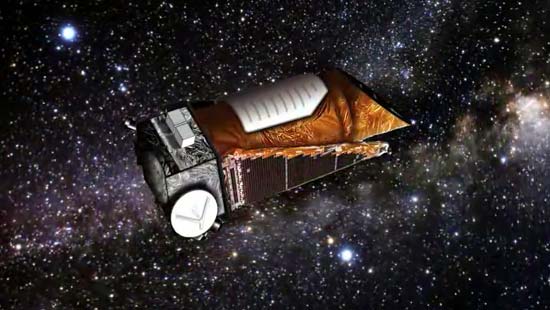Alien Planet Haul: NASA Space Telescope Spots 41 New Exoplanets

Astronomers have discovered 41 new alien planets in one sweep by analyzing how each world gravitationally yanks on its neighbors.
The newly confirmed exoplanets were spotted by NASA's prolific Kepler space telescope, which has detected more than 2,300 potential alien worlds since its March 2009 launch. The new finds, announced in two separate papers, bring the number of verified Kepler worlds to 115 and the total exoplanet tally to nearly 800.
"Typically planets are announced one or two at a time — it's quite exceptional to have 27 announced in a single paper, or 41 in two," said Jason Steffen, an astrophysicist at the Fermilab Center for Particle Astrophysics in Batavia, Ill. Steffen is lead author of one of the studies.
"It goes to show how rich the Kepler data are and how useful these new methods can be," Steffen told SPACE.com. [Gallery: A World of Kepler Planets]
Kepler flags exoplanet candidates via the transit method, which looks for dips in a star's brightness caused by a planet crossing in front of it. Confirming these candidates can be a tricky and laborious process, however, requiring follow-up observations by ground-based instruments or further analysis of Kepler's data.
Two independent teams of researchers took the latter tack to confirm the 41 new alien planets. They delved deep into the telescope's observations, studying how each world's gravity tugs on its sibling planets. These slight pulls cause regular variations in the planets' orbits, affecting when they cross in front of their stars.
One paper, by Jiwei Xie at the University of Toronto, confirms 24 new planets in 12 systems. Another study, by Steffen and his colleagues, confirms 27 planets in 13 systems. Five of the systems, and 10 of the planets, are the same in both papers. All in all, the new research adds 20 new planetary systems to the 47 that Kepler had previously confirmed, marking a more than 40 percent increase.
Get the Space.com Newsletter
Breaking space news, the latest updates on rocket launches, skywatching events and more!
"With systems like these, we can get really good information about the interactions among the planets in them," Steffen said. "This, in turn, helps us place the Earth and our solar system into the context of all planetary systems. Note that the number of planets in our solar system is now only 1 percent of the number of planets that are known. So, unlike 15 or 20 years ago, we can start to answer questions about how lucky we really are."
Steffen and his colleagues submitted their paper to the Monthly Notices of the Royal Astronomical Society, while Xie submitted his study to the Astrophysical Journal.
The $600 milllion Kepler observatory's main mission is to find Earth-size planets in the so-called habitable zones of their parent stars — a just-right range of distances that could support liquid water and, perhaps, life as we know it.
Follow SPACE.com for the latest in space science and exploration news on Twitter @Spacedotcomand on Facebook.
Join our Space Forums to keep talking space on the latest missions, night sky and more! And if you have a news tip, correction or comment, let us know at: community@space.com.

Charles Q. Choi is a contributing writer for Space.com and Live Science. He covers all things human origins and astronomy as well as physics, animals and general science topics. Charles has a Master of Arts degree from the University of Missouri-Columbia, School of Journalism and a Bachelor of Arts degree from the University of South Florida. Charles has visited every continent on Earth, drinking rancid yak butter tea in Lhasa, snorkeling with sea lions in the Galapagos and even climbing an iceberg in Antarctica. Visit him at http://www.sciwriter.us









